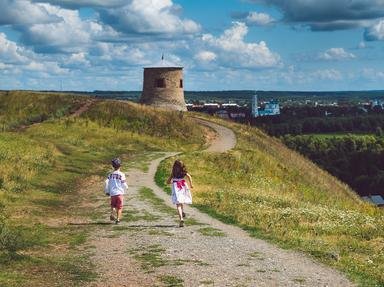Quiz Answer Key and Fun Facts
1. During the Baroque period, art changed from the simpler style of the previous era, and became very ornamental and dramatic. A famous European painter from this period was Peter Paul Rubens. What nationality was he?
2. The great buildings of this period were large and imposing. They had plenty of space, with columns and domes, and large impressive staircases leading up to grand entrances. The magnificent St Paul's Cathedral in London is an example of this. What was the name of the architect of this building?
3. You may have noticed there's a strong emphasis on religion in art and design in the Baroque period. That's because it was a very religious time. The church was a major part of people's lives then. What was the main religion people followed in Europe at this time?
4. Clothing worn in the Baroque era depended on how rich you were, or in which job you worked. In many cases, something unusual was worn on heads as well. What was this?
5. Poor people ate what they could in this era, but working class people were better off. Many of them ate four nourishing meals a day. The wealthy, of course, ate all the rich food under the sun. What was introduced to the fashionable world of dining at this time?
6. Music and theatre flourished in the Baroque era. One of the great composers from that time had a surname that, when said aloud, sounds a little like a dog. Do you know his name?
7. Baroque medicine and health was very precarious indeed. Be very thankful you didn't live then. Yet this was also a time when many advances were made from the horrible treatments of the past. What were most medicines made from in the Baroque era?
8. Let's have some fun now for a change. All work and no play are not good for you. One of the games children played back then consisted of two long poles of wood with a small step, or steps, attached to each one in several places. You then tried to stand on these steps and keep your balance as you walked along on the poles. What were they called?
9. Many new inventions came out of this era to improve life in one form or another. One of these was very popular with both adults and children when it finally reached Europe from other lands. What was it do you think?
10. Many great historical events took place in the Baroque era. Many wars were fought, great leaders came and went, and many new discoveries were made. New countries were discovered as well. These were settled by Europeans from all over the world. Which great country in the world today was first settled by Europeans in the Baroque period?
Source: Author
Creedy
This quiz was reviewed by FunTrivia editor
NatalieW before going online.
Any errors found in FunTrivia content are routinely corrected through our feedback system.

